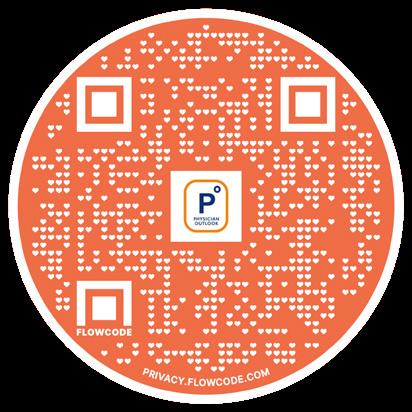






A group of nationwide ethical health Benefits Advisors are collaborating to shake up the vast power once exclusively held by the BUCAHs (big five health insurance providers, Blue Cross/Blue Shield, UnitedHealthcare, Cigna, Aetna, and Humana). Mitigate Partners is shining light on the TRUE--surprisingly affordable-- cost of healthcare when the middlemen are cut out.
We physicians do not receive any real training in the “business” of healthcare, and we often find out how things work anecdotally from our patients, administrators, the news or from our own experiences.
When my insurance changed from Aetna to Blue Cross-Blue Shield I learned firsthand just how messed up, expensive and unethical the financial side of the house of medicine had become.
I was diagnosed with post-menopausal osteoporosis years ago, and have been taking biannual injections of a brandname monoclonal antibody that has helped to inhibit further bone resorption. The average retail cost of denosunab (Prolia™ ) is approximately $1,300.00 (although the average retail price is approximately $2,900.00).
When I had Aetna as my insurance carrier, my PCP pre-certified and ordered the medication directly from CVS Caremark, the Pharmacy Benefit Manager (PBM) affiliated with Aetna, and the medication was administered by injection
in my internist’s office. I had no personal out-of-pocket expenses, and the office collected from my insurance company a modest payment for administering the injection itself (CPT code 96372). What Aetna paid CVS-Caremark for the Prolia remains a mystery because the companies are incestuously tied to one another and there is little to no transparency in this relationship.
When I changed jobs and had Blue CrossBlue Shield as my insurance carrier, I was told by my PCP’s office that hospital policy would not allow me to receive the injection in the office because “it wasn’t covered.” I would have to go to the hospital’s on-site “infusion center” to get my medication.
I thought that it was odd--and dangerous, as we were mid-pandemic--for me, a frequently exposed healthcare worker, to have to get a subcutaneous injection at my rural hospital’s cancer center. It made no sense to potentially expose immunecompromised patients when the hospital and offices were not allowing ANYONE inside their doors for fear of COVID19 spread.
When I got my bill and Explanation of Benefits, I immediately understood why “hospital policy” had prohibited me from getting the injection in the office. Apparently the “Blues” plan pays handsomely for a monoclonal antibody injection (considered a “specialty” drug) when it is administered in a cancer infusion center.
My local rural hospital billed my insurance almost 4 thousand dollars. My insurance company paid a percentage of the billed charge, and the hospital wrote off a large percentage. I was billed the difference, but the experience left me confused, angry and perplexed. I had received the same exact drug (which had not gone up in wholesale or retail price) using the
same technique (a subcutaneous injection) at two different locations within a few hundred yards of one another with wildly different billed costs and reimbursements. I felt like I was in the Twilight Zone.
I paid my bill, and thankfully I have the financial means to be able to afford to. I also understand the medical importance of preventing further bone loss.
But what if I was a non-medically savvy or cash-strapped patient? I would likely forgo my bi-annual shots and end up with much more expensive and debilitating complications from untreated progressive osteoporosis.
And why do hospitals have to play by THEIR rules? Doctors are notorious for acronyms and abbreviations, and I don’t know about you, but I get a little jelly when someone in the healthcare space spits one out that I have no idea what they are talking about. The first time I heard the term “BUCAHs” I feigned understanding what it stood for and was frustrated that I couldn’t figure out what it meant, even when I “googled” the term.
It wasn’t until I was introduced to Carl Schuessler and his fellow Mitigate Partners, that I understood what “BUCAHs” are and why they are considered part of what he calls “the cartel.” Schuessler is a thought leader and a pioneer in the field of EMPLOYER-built healthcare solutions and is shining some much-needed light on INSURER-built, middlemen-heavy expensive healthcare.
Insurance-built healthcare is clearly NOT a financially wise solution for most employers, nor is it an affordable option for most of the employees who depend on those benefits. The days of “great” health
insurance for most American employees seem to be long gone. High deductibles, prior authorizations, narrow specialist networks and restrictive formularies for medications often stand between the patient and the healthcare that they need. Physicians get frustrated by being told by an insurance representative how they should practice medicine.
Bluntly put, the health insurance industry cares more about profit than they do the patients they serve or those who provide care. By negotiating fee schedules with physicians and other healthcare providers that pay much less than the cost of the care provided, they make obscenely handsome profits.
Insurance companies have a fiduciary responsibility to their shareholders, NOT to the covered lives they represent. Opaque pricing combined with selfserving policies and priorities, layers of bureaucracy and very well-paid executives at the very top are bankrupting school districts, small hospitals and many of our nation’s small businesses.
The Affordable Care Act (also known as “ObamaCare”) has turned out to have quite the OPPOSITE effect on the cost of healthcare for many healthcare consumers (patients) and has driven down reimbursement for the healthcare entities that provide that care. The population most affected has been the working middle class who often joke about the “UNAffordable Care Act” that eats up most of their paycheck. An unexpected doctor’s visit for a cough and fever or an ER visit for an injury often throws this kind of family into a financial tailspin due to high deductibles, large copayments and unreasonably high priced medications and procedures.
As Publisher and Founder of Physician OutlookI believe that it is important for ALL of us to learn about models of healthcare delivery that save money and provide excellent care, where both patients and physicians (and the rest of the healthcare team) report high levels of satisfaction and great outcomes.
This issue is dedicated to recognizing the healthcare heroes like Carl Schuessler and the Mitigate Partners colleagues that are doing the “behind-the-scenes’’ work that makes healthcare affordable. They are revolutionizing the concept of employerbuilt benefits that attract and retain quality employees while simultaneously saving everyone money AND restoring a personalized healthcare experience.
Entities like the BUCAHs and the big corporate hospitals (who all are plagued by misaligned incentives) must be coerced into becoming transparent, and we ALL (patients and physicians) need to be given choices when it comes to our healthcare.
P.S. It may have been a little late, but after many hours on the phone with my insurance company and their PBM/ specialty pharmacy Accredo, I was able to negotiate going back to my PCP’s office instead of the infusion center for my last Prolia shot. The out-of-pocket amount I have to pay is approximately $700 (directly to the specialty pharmacy this time). Trying to make sense of the bill and EOB is a job for another day, and a battle to fight on a different front. I plan on introducing Mitigate Partners to my small self-insured private university employer, and hoping they can explore and possibly reap the benefits of a custom-built employer plan. Even if they decline and continue to go with the “BUCAHs” I look forward to learning what the ACTUAL price of Prolia would be in a custom-built plan.
 Written by Dr. Marlene Wüst-Smith
Images by Dr. Marlene Wüst-Smith and Dr. Julia McKillin
Written by Dr. Marlene Wüst-Smith
Images by Dr. Marlene Wüst-Smith and Dr. Julia McKillin



From the Publisher
Mitigating MATTERS!
by Marlene Wüst-Smith, M.D./p.2-3

Humans of Medicine
We Won the Right To Know Prices, But We’re Far From Done by Cynthia A. Fisher/p.8-9
Docs 4 Patient Care Foundation by Lee Gross, M.D./p.21
Mitigate Partners by Breanna Courville, BA/p.7
Jerry Ashton: A Sense-Maker who Won’t R.I.P. by Dr. Marlene Wüst-Smith/ p. 28
What’s All the Magic about Direct Primary Care?
byShane Purcell, M.D./p.34
Pleasures and Pastimes
Protecting A Dream
Cristy Gupton / p.6-7
Katie Button Restaurants by Molly Mathews/p.6
Mitigate Partners Word Find pg. 27
MicDropper by Samantha Petzold/p.9
Future of Medicine
Your DPCdoc by Riley Snowden/p.29
Generations of Healthcare by Mary May Schuessler, B.S.N., R.N./p.22-24
Mitigating Partners Saves a Small Hospital Big Money by Molly Mathews/p.16
Historical Landmark Gasparilla Inn & Club: Direct-to-Employer Contracting In Action by Alyssa Dean/p.12-15
#healthcarereform is Challenging Wall Street by Roxanne Bruce, MBA, DrBA, FACHT/p.32-33
The Doctor’s Bag To Err is Human by Connie J. Perkins, PhD, RN, CNE, Jacob Schoeberl, Alexandra Rozanski, Andrew Campbell, and Abbigail Cloud/p.8-11
Are Middlemen Ever Appropriate? by Roxanne Bruce, MBA, DrBA, FACHT/p.29-30
The Last Word Transparency’s Role in the Fight for Physician Independence by Marni Jameson Carey/p.18-19

The community non-profit hospital is supposed to be the place its citizens can rely on for quality healthcare. But in 2019, Asheville, NC was watching Mission Memorial Hospital be acquired by a forprofit giant—HCA or Hospital Corporation of America. Not many knew what was coming but Liz Button, co-owner of Katie Button Restaurants had an uneasy feeling about it. She knew her employees and the health plan they counted on needed protecting.
Katie had heard about Health Rosetta, and she wanted to learn more. That journey led her to a new employee benefits advisor, Cristy Gupton. Cristy and Katie collaborated on improvements such as: access to relationship-based primary care, a direct contract with a local, independent pharmacy and bringing it all those improvements together by moving to an independent third-party administrator. The result was rewarded by cheers from staff during education meetings at open enrollment and more importantly a significant reduction in the cost of care.
It was all going great, we even helped an employee get her ACL repaired with some innovative collaboration between her DPC doctor, the TPA and myself, remembers Gupton. Then, March 18, 2020 came.
The local health department held a meeting. Asheville’s restaurant community was told, “you need to shut down” due to COVID-19.
So, that’s what they did. Everyone remembers how scary that was.

The world was at a standstill. Jobs and normal life were put on hold. The best laid plans of returning back to normal operation where put on hold as a virus debilitated the restaurant industry.
Quarantine lasted a bit longer than expected, but when some restrictions were lifted and PPP money was available, Katie Button Restaurants began its reemergence from the shut down.
By September, they’d rehired over 50 of their laid off employees and almost all came back ready to work. It was time to get a health plan in place to take care of everyone.
“We kicked the tires on several ideas and while going back to being self-funded brought some trepidation with it, ultimately our prior health plan was the best choice both from a healthcare perspective and a financial perspective”, Gupton recalls.
One point of stability that reinforces the power of community, is that the direct primary care doctors never skipped a beat. They kept taking care of Katie Button’s employees even through quarantines and all. When they restarted the health plan
on December 1, 2020, the relief of finally getting back to normal was healing.
In June 2021, Liz Button and Cristy Gupton convened with colleagues at the “Demystifying Healthcare Costs - a Mitigate Partners Summit” to talk about their experience and discuss best practices of their case study (which is still an evolving story).
Mitigate Partners is a collective of the brightest minds in healthcare and employee benefits. Katie and Liz had the best team working on solutions to the healthcare problem. The were working as a team to create a sustainable and affordable future for their staff.
Most Mitigate Partners are Health Rosetta Advisors with other partners from the FairCo$t Health Plan. This health plan brings the highest performing elements of health insurance to employers around the country yielding a much lower cost than the traditional carriers (referred to as BUCAs, meaning Blue Cross, United Healthcare, Cigna, Aetna).
“At the end of the day, we built this together. As we say at Mitigate Partners,” this is employer-built NOT insurer built” and that has made all the difference. And all it took was a good advisor and a little courage.”, Cristy Gupton remarks.
The Mitigate Partners team knows that change isn’t easy. The truth is that when you look into the faces of your employees you know change is needed. That’s when you summon up the courage to bring about something different and better than what you had before.
Written by Cristy Gupton Photo Courtesy of Katie Button“Liz Button, who spoke at the Mitigate Partners “Demystifying Healthcare Costs” event, is a Co-Founder and Chief Impact Officer for Katie Button Restaurants. Liz develops the benefits for the employees of the restaurant group with the support of Mitigate Partner Cristy Gupton. She is an advisor for the sustainability and philanthropic efforts of the restaurant group. Liz’s dream was to start a restaurant in Asheville, NC, and co-founded the Katie Button Restaurant group with her family, including her daughter Katie Button, the CEO and Executive Chef of the Asheville North Carolina locations.
Button was also Board Chair of Asheville Independent Restaurants Association (AIR) from 2018-2020. With over a hundred members, AIR supports independent restaurants in the Asheville community. As chair of AIR, Liz was committed to finding solutions to problems faced by independent restaurants. Currently, she is on the board of directors for Thrive Asheville, an organization developed in 2020 to collaborate with residents and leaders from diverse perspectives to find the best





approach for solutions in the Asheville community; currently, with a focus on sustainable tourism and housing. She continued to advocate for independent restaurants during the COVID-19 pandemic by supporting the NC Cocktailsto-go policy, which allowed restaurants to increase their takeout revenue. Her daughter Katie was instrumental in securing Senator Tom Tillis as a cosponsor of the Restaurants Act to help fund independent restaurants coping with economic challenges due to the pandemic.
Since the dark day of March 15, 2020, when 160 employees were terminated due to the uncertainty of running a business during the pandemic; Katie and her husband Felix Meana, who is a co-founder and the Chief Experience Officer for KBR, developed new business models to help sustain the businesses after being forced to close their year-old Button Bagel shop during the pandemic while focusing on their acclaimed flagship restaurant, Curate.
Cúrate Bar de Tapas - Asheville, NC
La Bodega by Cúrate - Asheville, NC
Cúrate Spanish Wine ClubAsheville, NC
Cúrate Trips - Spain and USA
Cúrate at Home - USA
Katie Button RestaurantsAsheville, NC
The new businesses include La Bodega by Curate, a retail shop and restaurant providing authentic food and wine from Spain; Curate at Home, which ships food nationally to their many fans outside of Asheville and The Curate Wine Club ships hand-selected wines to many states. A new wine bar is soon to open upstairs from La Bodega by Curate. There have been several new hires and positions created since May of 2020, requiring the administrative headquarters to the former local newspaper warehouse. Additionally, a production kitchen and shipping area are located there, allowing for the growth of their shipping processes.
Written by Molly Mathews Photo Courtesy of Katie Button

In our highly politicized environment, the parties of the left and right agree on very little. However, on one issue, they do agree. Healthcare price transparency is a policy the Trump Administration heartily championed and made into a rule, and one that the Biden Administration strongly supports. Moreover, according to multiple surveys, 90 percent of Americans also want to know health care prices.
On January 1, the Health Care Price Transparency Final Rule took effect, and Americans won that right.
The problem is it didn’t happen. Hospitals, which tried to kill the rule twice in court and failed, have universally, and with few exceptions, not complied with the federal rule. A recent study that reviewed 500 random hospitals in 50 states found that 94.6 percent of hospitals were not complying. Other studies have had similar findings.
This summer, the Biden Administration added teeth to price transparency rule. The Department of Health and Human Services announced plans to increase monetary penalties on noncompliant hospitals from an pathetically low annual maximum of $109,500 to a more meaningful $2 million.
While that’s a good start, we need to do more if we are going to usher in the consumer revolution that can fix the American healthcare system.
At PatientRightsAdvocate.org, we are working to advance policies that will bring systemwide transparency to healthcare, and that will allow patients easy, free, real-time access to upfront, prices. Empowered with such information, consumers — both patients and employers — will be able to shop for the best quality of care at the lowest possible price.
While getting this rule passed was a huge victory for Americans, we must now fight to get hospitals and ultimately insurance companies to obey the law. The current system of hidden prices for healthcare services leads to overcharging, price-gouging, fraud, and the inability for consumers and employers to shop for and receive high quality, affordable care.
The price transparency rule requires hospitals to publish their real prices, including their discounted cash prices and secret contracted rates by payer and plan. Easy access to actual prices would put consumers in the driver’s seat of their healthcare decisions, giving them financial certainty, and assurance that a trip to the hospital won’t result in financial ruin.
Hospitals are required to post these prices in two formats, a machine-readable format and a consumer-friendly version. The machine-readable format will allow third-party tech innovators to aggregate this information in easy-to-use web applications.
When they do, consumers will be able to shop and compare healthcare prices on their laptops or mobile devices, the way they shop for everything else from plane tickets to home appliances. This price transparency can transform the opaque and inflationary U.S. healthcare system into a functional, competitive marketplace that has the potential to dramatically lower runaway healthcare costs.
While HHS’s higher monetary penalty will help, we need even more significant penalties and enforcement to ensure all hospitals comply. PRA and Consumers First, an interest group coalition representing labor unions, consumers, and employers, recommend increasing the noncompliance penalty to $300 per bed per day. Recent polling by Harvard pollster John Della Volpe suggests more than three-quarters of Americans support such stronger fines on hospitals that hide their prices.
If, in its forthcoming revised rule, HHS reinforces the law with stricter penalties, cuts off avenues to work around the rule, and enacts robust enforcement, we can begin to see the benefits of hospital compliance and ultimately turn the vision of healthcare price transparency into reality. Meanwhile, Americans must exercise their right to know real, upfront, all-in prices and demand them as a condition to receiving care. That is our mission, and we hope you will join us in this fight.
HHS needs to enforce the aspect of the law that requires hospitals to provide price information without barriers. Price-estimator tools usually require patients to provide personal information, including names, addresses, and insurance information. Thus, what should be an anonymous search for competitive prices turns into a way for hospitals to grab patient data, in exchange for providing only one price estimate, which is meaningless and non-binding. Price estimators’ biggest flaw is that they don’t protect patients from wild deviations from the projected price. The Wall Street Journal recently reported that prices can vary by ten times within the same hospital depending on the payer, and sometimes price fluctuations are even larger.
HHS should require hospital executives to attest that their complete prices are available, transparent and easy to access, and to send a link to their online database to a HHS, where the agency should confirm full compliance. Fortune 500 CEOs must make similar disclosures routinely.
The rule needs to further hold hospitals accountable by requiring them to not only provide real prices, not estimates, but also to eliminate the common disclaimers on their websites saying that the hospital estimates offer no guarantee that the final bill will match.
HHS should engage in a robust consumer education campaign to increase public awareness of the rule and let consumers know they now have the right to know real prices before they receive care.
HHS needs to modify the rule and ban the option of letting hospitals use a “price-estimator tool.” Allowing hospitals to provide price estimates lets them continue to game the system, obfuscate real prices, and skirt the rule’s intention. Because they offer one insurancebased prices, estimates rarely provide discounted cash prices, which are typically 39 percent less than insurers’ negotiated rates, according to research published by Vanderbilt University health economist Dr. Larry Van Horn.
by Mitigate Partners Cynthia A. Fisher is a life science entrepreneur, founder and former CEO of ViaCord Inc., and founder and chair of PatientRightsAdvocate.org, a 501(c)(3) nonprofit, non-partisan organization that provides a voice for healthcare consumers to have transparency in healthcare. PRA embraces free market principles, which will foster a competitive, functional marketplace and restore trust and accountability to the nation’s healthcare system.

Healthcare and music-a combination that is usually unheard of, but in Chris Yarn’s life, it’s an everyday thing. Yarn, also known as Frank MicDropper, posts videos of parody songs to the tune of Frank Sinatra hits on his LinkedIn account. His lyrics touch on the topics in the healthcare industrial complex. Along with being an entertainer, Yarn is also the CEO of Walk On Clinic, which is a “mobile healthcare logistics company with unrelenting passion to improve healthcare by providing convenient medical services for individuals at their workplaces,” according to the company’s LinkedIn profile.

It offers a mobile version of primary care physicians to employers. Yarn graduated from the University of Central Florida, where he now volunteers to mentor and teach current students. He became a business owner when he helped his brother found Big Storm Brewing Company before moving onto the insurance world. He spent 13 years as a licensed agent and blew through many different focuses of the industry like the carrier world, the independent agencies model, and even explored captive ides of the insurance industry. He opened a marketing and consulting agency and has been in the shoes of various executives of the industry. In 2017, the Walk On Clinic was created. Yarn lives in St. Petersburg, Florida with his wife Michelle Yarn, who is a national TV personality and HSN host. They have two boys named Jack and Charles, who, I’m sure, are never embarrassed that their dad posts videos of himself singing to Sinatra songs on the internet.
Written by Samantha Petzold Image by Steve Buissinne from Pixabay

Mitigate Partners, a consortium of 30+ employee benefit consulting and brokerage firms that focuses on risk management, cost containment, and employee benefits, recently held a conference advocating the reduction of healthcare costs for both employers and patients. They had an array of speakers that spoke on their successes thus far as well as on how to continue to improve healthcare to keep it affordable for those in need.
Carl Schuessler Jr., Co-founder of Mitigate Partners organized the conference and hosted it alongside his fellow Mitigate Partners. Carl brings more than 30 years of experience in benefits consulting and financial services to the field, and pioneered the fiduciary approach to benefits advisory services. His passion for fixing the problem of runaway health-care costs in this country and his desire to treat the employer’s money as his own led him through years of research culminating in the development of his proprietary FairCo$t Health Plan. This innovative plan design seamlessly integrates 20+ cost containment solutions with a high-performance health-care solutions platform. This combination provides first-class benefits at substantially lower costs to employers all while realizing better clinical outcomes for plan members. Carl often rallies audiences with stories of how Mitigate Partners are challenging Wall Street (insurer-built) health plans by creating Main Street (employer-built) health plans and bending the healthcare cost curve. Many of the Mitigators are certified Rosetta Health Professionals that are assets to the communities they interact with and have a positive impact on the health industry.
One of the speakers at the conference, Marshall Allen, spoke on how patients educate themselves to better understand healthcare and strive toward improving their individual consumer experiences. During this conference, he references his bestselling book ‘Never Pay the First Bill’ which outlined how clients
can protect themselves from price gouging. He provides a stepby-step game plan that helps patients identify care that may be pushing them to receive unnecessary tests and medications in order to boost up the price of care.
Some featured presenters at this conference were Liz Schrock, Dr. Lee S. Gross, Dr. Eric Crall, Cynthia Fisher, Marni Jameson Carey, and Chris Yarn. Liz Schrock, Benefits Champion at The Gasparilla Inn, is responsible for the administration of The Inn’s employee benefits program. Her main focus is to assist over 215 employees in navigating the cost-savings avenues that her company has put in place.
Dr. Lee S. Gross, President of the Docs 4 Patient Care Foundation, is a nationally recognized physician leader who was instrumental in advancing the concept of Direct Primary Care. In addition to actively seeing patients, he also serves as a healthcare consultant to physician practices, medical organizations, insurance groups, hospitals, as well as private businesses. He is a trusted adviser to lawmakers and policy leaders on national health policy initiatives.
Dr. Eric Crall was an employed Family Practice Physician for almost 2 decades before he started his own Direct Primary Care practice in Florida. He helps other physicians start their own DPC practices, and shows employers and patients how to improve their health benefits.
As well as the speakers who work in the field to assist clients, there were also employers who were able to speak on their success stories. Vince Sica was one of these speakers. He is the CEO of DeSoto Memorial Hospital, Inc. He has worked hard to help the hospital grow while still confronting the healthcare industry. Lois Hilton, whose career also ties to DeSoto Memorial Hospital as the Director of Human Resources, has the

responsibility of the function of the department. Glenn Price is responsible for the financial operations of The Gasparilla Inn & Club. He has years of experience in managing their self-funded health plan integrated with many cost containment strategies.
Mitigate Partners will join the American College of Healthcare Trustees (ACHT) for events across the United States. The ACHT is inviting local business owners and physicians to discuss making healthcare better for everyone and giving business owners options.
From sole proprieters to large companies, we are helping them all learn where about saving Millions like The Gasparilla Inn and DeSoto Hospital!

Written by Breanna Courville, BA
Image by blueland from Pixabay and Photos Courtesy of Mitigate Partners



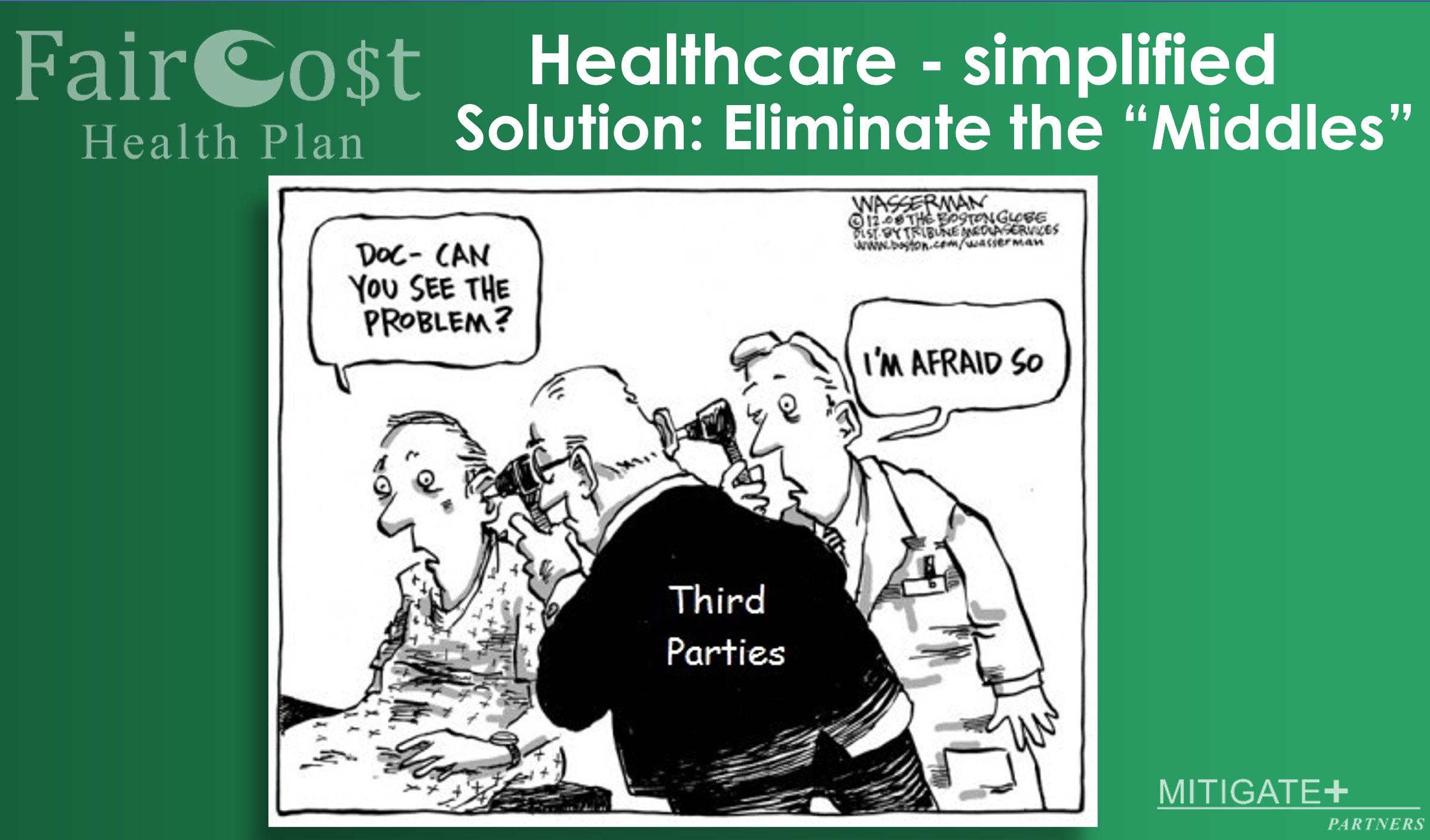

What really is a middleman? I have asked myself this question a hundred times. The answer always seems to be the same. A middleman is the person that stands between myself and the product or service that I am trying to buy. The big question is, do we really need that person standing between us and what we want?
In a few cases, the answer is yes! My hard and fast rule is this: If the person providing the service or selling the item is not capable or doesn’t want to complete the sale, then they need to get a middleman involved. Imagine you want to buy something from a local farm. If this farmer is extremely busy with livestock and/or crops and doesn’t have a way to make sales, then they need a person to handle things. It doesn’t mean the farmer couldn’t do it, it means that the farmer values the service provided and wants to be sure that the customers get what they need. So, the farmer may contract with a company, who works to sell farm products, handles collecting payment and getting the products/services to the customer.
The reality is that it is often more complicated than this example. For most farmers they contract with a company that wholesales their products. That wholesaler may contract with a trucking company to move the products. The trucking company handles the delivery to the retail location (grocery store or shopping center) charging the farmer for shipping and sometimes charging the wholesaler too. The retail centers then handle the sales to you, the customer, and of course it gets marked up some more. A pumpkin that a farmer grew for Halloween may have earned the farm $1.00, the trucking company charged $1.25/mile to move them, the wholesaler sold it to the retail center for $4.75, and then the retail store sold it for $8.00.
The farmer put in months of work, days of labor and may generate a teeny tiny profit. If we take out most, or all of those middlemen, then the change in income is drastic! If the farmer sets up a small honor stand on their property and sells the pumpkins for $5 each, they may see a few thefts, but will not have to deal with
loading a truck, harvesting in bulk, possible rejection from the end retailer, and loss for trucking. The farmer in that case also more than doubled what they would have made through all of the middlemen. If the farmer works with a company like Shop Small Farms LLC who takes a small percentage of the overall sales price, the farmer could easily increase the price on the pumpkins to $8 to match the store and will still have a substantial increase in revenue.
You might be asking yourself, “how is this related to healthcare. . .?”
When you pay for healthcare, you usually aren’t paying the doctor directly. In fact, you probably have 5-10 sets of hands in between. Your employer may take money from your paycheck, to send that money to the insurance company. The doctor’s office probably hired someone to send an invoice, and handle all of their billing. The invoice gets to the insurance company, the insurance company pays the biller who ultimately pays the doctors office, and then eventually pays the doctor. If
that doesn’t seem complicated enough, remember that everyone along the way takes a little piece of the profits. Imagine if we simplified this process, how much money patients could save, and how much less doctors would have to charge to receive the same level of income.
Written by Roxanne Bruce, MBA, DrBA, FACHT
As Carl Schuessler always says, “Eliminate the ‘Middles’ and that is how you save.”

Safety in the healthcare field has always been a topic of discussion. However, it was not until 2000 that the book To Err is Human identified and spotlighted numerous dangerous issues within the healthcare system that there was a national call to action to make health care safer. Since then, there has been extensive progress made in the field of medical error identification and prevention thanks to efforts of many leaders in the healthcare field. The concept of medical error prevention is prevalently featured throughout healthcare education by way of discussions, trainings, classes, and simulations.
Rarely discussed in these medical error prevention forums, however, is an embarrassing paradoxical secret: medical mistakes are STILL occurring, and perhaps at an alarmingly increasing rate. One would assume that the application of technology would have healthcare delivery more efficient, less costly and
safer, but in many circumstances the exact opposite has occurred.
The widespread rapid introduction of electronic health records in the healthcare industry within the past decade is causing a form of human fatigue and burnout that is actually putting patients at increased risk instead of protecting them. EHR’s have produced a multitude of unintended burdens on clinicians.
Health Information Technology was not instituted with the end-user in mind. Well-intended processes and checklists that were implemented to help protect patients may have worked well pre-EHR, but they have only served to frustrate clinicians who went into medicine because they wanted to interact with humans, not with keyboards.
Many of the processes that hospitals had put in place after To Err is Human was published in 2000 to protect patients and keep them safe did not take into account the mayhem that Electronic Health Records would cause. EHR’s were designed and built for billing and
coding and were never designed nor intended to be useful for the delivery and documentation of safe healthcare.
Overnight, bedside nurses and physicians were transformed from critical thinking healthcare professionals into glorified data entry clerks. Meaningful interactions with patients were interrupted by the constant need to ask and re-ask their name and date of birth (in order to ensure that patients were not inadvertently given one another’s medication).
Instead of looking a patient in the eye while taking a history or doing a physical, physicians and other clinicians are intimately interacting with their keyboards and dot phrases.
Are we, as the United States, ready for the sequel to the turn-of-the century landmark book? More than 2 decades later after its landmark debut, Donald M. Berwick, one of the authors of To Err is Human, emphatically thinks that the answer is an emphatic “NO.”
There, are however, some steps that we can to take in order to truly tackle the complex issue of medical errors and patient safety:
Unfortunately, medical errors are the third leading cause of death in the United States (Johns Hopkins Medicine, 2016). Information like nosocomial infection rates, readmissions, deaths, and complications that play a role in this huge number are made available thanks to entities like Hospital Compare and Leapfrog. Patients are now able to make informed decisions about where to get care. Data is provided for facilities to
analyze what they are doing well and what they need to do to improve compared with other healthcare agencies.
Suggestion for improvement: Why do patients have to go to Hospital Compare or Leapfrog to see this data (which, by the way, is very outdated by the time it is published)? Hospital administrators are the ones who have access to this data and are the ones who provide the information to reporting regulatory bodies...so why don’t they instead report their data “live” on their own websites for patients?
Transparency is key to establishing trust between the patient and the provider. Trust needs to start at the very top of the proverbial organizational food chain.
Medications and treatments are an essential aspect of the healthcare system. Preventable errors can occur at any point in the medication process from prescription to distribution and education. Examples of medication errors can include incorrect drug, dose, patient, labeling, as well as overlooked drug-drug interactions.
Shockingly, the Academy of Managed Care Pharmacy (2019) reported that 1.5 million people every year are harmed because of preventable medication mistakes. In addition, emergency departments receive roughly 700,000 patients yearly because of adverse drug events (Agency for Healthcare Research and Quality, 2019).
Furthermore, reported adverse drug events more than doubled from 2013 to 2018 much after the publication of To Err is Human (Baah, 2020). While hospitals have come some distance by having patient safety committees and policies, are they truly meaningful?
Are the incentives truly incentives or just a method to “break-even”?
Suggestion for improvement: Funds need to be allocated to pay for the cost of bedside health care workers to join and run patient safety committees. Continuing to mandate hollow committee assignments to healthcare workers who already have a lot on their plates is counter-productive to advancing true patient safety reforms.
The reporting of errors, and the process by which they are reported, varies between states. In the State of New York, for example, error reporting is mandatory (New York Department of Health, 2018). However, because of the many different reporting agencies and systems, the way that errors are coded and reported are not clear, and there are overlapping reporting systems that have confusing coding systems.
For instance, if a patient dies or has serious injuries such as an adverse event, it is coded as “915” (New York Department of Health, 2018). However, not everything coded as “915” is the result of an error. This ambiguity doesn’t allow for a proper root cause analysis to be performed. Furthermore, the questions can be subjective, making finding the root cause even more difficult.
There should be one reporting system that is very clear and root cause-focused“what happened and what circumstances led up to the error occurring?”
Let one designated government entity determine what “code” it falls under and let healthcare agencies focus on the root cause to prevent future errors. The systems should also be anonymous since the point of reporting an error should
be to prevent the error from occurring in the future, not to punish or shame a healthcare professional for a mistake that anyone could have made.
There are at least 10 different organizations that regulate healthcare in the United States. These systems are all intertwined and responsible for various patient safety data collection, regulation, and knowledge dissemination (see chart). Since there are so many different organizations, some collecting information and some disseminating information, it leads to unnecessary documentation time for healthcare workers, as well as an abundance of unnecessary information. Information that sometimes gets lost in translation.
On average a doctor will spend 16 minutes and 14 seconds documenting after every single patient, and for every hour with a patient, there are two hours of documenting (Young, 2016). It is also difficult to remember what gets documented where and where to find resources regarding patient safety practices. Further problematic, this type of documentation is in addition to the patient record documentation done after seeing a patient.
Regardless of the amount of time spent documenting for either reason, errors occur because documentation systems don’t communicate with one another. As a result, unbelievably serious errors have occurred (such as failing to report a fatal brain tumor to a patient or oncologist). (Schulte & Fry, 2019)
It is necessary to have a more simple way of documenting all of the various required information in one system, and there has to be a more efficient process in place to make real progress.
One organization should handle the data collection and dissemination of medical error information rather than several. For instance, instead of having the Centers for Disease Control and Prevention (CDC), the Food and Drug Administration (FDA), and Occupational Safety and Health Administration (OSHA) all collecting and disseminating patient safety data, one agency should be appointed to handle both. This would also allow for healthcare professionals and administrators to have one source to go to when looking for information rather than several. The same system that healthcare professionals use to document patient care should also be used to collect data for reporting. Optimally, that one system should also be used from inpatient to outpatient services, further removing the window of error that can occur with paper records being lost or electronic systems not communicating.

“RECOMMENDATION
7.1 Performance standards and expectationsforhealthcare organizationsshouldfocus greaterattentiononpatient safety.Regulatorsand healthaccreditorsshouldrequire implementcareorganizationsto meaningfulpatientsafetyprogramswithdefined Publicexecutiveresponsibility.andprivatepurchaserstoshouldprovideincentives healthcareorganizations to demonstrate continuousimprovementinpatient
safety”(IOM,p.133).
“RECOMMENDATION 5.1 A nationwide mandatory reporting system should be established that provides for the collection of standardized information by state governments about adverse events that result in death or serious harm. Reporting should initially be required of hospitals and eventually be
“Recommendation 4.1 Congress should create a Center for Patient Safety with the Agency for Healthcare Research and Quality” (IOM, p. 69).


References:
Academy of Managed Care Pharmacy. (2019). Medication Errors. Retrieved from https://www.amcp. org/about/managed-care-pharmacy-101/conceptsmanaged-care-pharmacy/medication-errors
Agency for Healthcare Research and Quality. (2019). Medication Errors and Adverse Drug Events. Retrieved from https://psnet.ahrq.gov/primer/medication-errorsand-adverse-drug-eventsBaah, E. (2020, April).
Analysis of data on adverse drug events reported to the food and drug administration of the United States of America. Open Journal of Statistics, 10(2). Retrieved from https://www.scirp.org/journal/paperinformation. aspx?paperid=99339Fink, E., Chevalier, C. L., Ruperto, A., Dameron, P., Heigel, F. J., Leslie, R., Mannion, J. & Panzer, R. J. (2005, February).
Lessons learned from the evolution of mandatory adverse event reporting systems. Advances in Patient Safety: From Research to Implementation, 3. Retrieved from https://www.ncbi.nlm.nih.gov/books/NBK20547/ Johns Hopkins Medicine. (2016, May 3).
Study suggests medical error now third leading cause of death in the U.S.Retrieved from https:// www.hopkinsmedicine.org/news/media/releases/ study_suggests_medical_errors_now_third_leading_ cause_of_death_in_the_usKohn, L. T., Corrigan, J., & Donaldson, M. S. (2000).

To err is human: Building a safer health system. Washington, D.C.: National Academy Press.New York Department of Health (2018, December).
New York patient occurrence reporting & tracking system (NYPORTS) summary statistics 2014-2017. Retrieved from https://www.health.ny.gov/facilities/ hospital/nyports/annual_report/docs/2014-2017_ statistical_report.pdfSchulte, F. & Fry, E. (2019, March 8).
Death by 1,000 clicks: Where electronic health records went wrong. Retrieved from https://khn.org/

“RECOMMENDATION 8.1 Health care organizations and the professionals affiliated with them should make continually improved patient safety a declared and serious aim by establishing patient safety programs with a defined executive responsibility. Patient safety programs should: (1) provide strong, clear, and visible attention to safety; implement nonpunitive systems for reporting and analyzing errors within their organizations; (2) incorporate well-understood safety principles, such as, standardizing and simplifying equipment, supplies, and processes; and (3) establish interdisciplinary team training programs, such as simulation, that incorporate proven methods of team management” (IOM, p. 156).

In the sprIng of 2021, st. Bonaventure unIversIty offered an honors specIal topIcs course focused on MedIcal error In the unIted states. the course requIred honors students to crItIcally revIew the landMark MedIcal puBlIcatIon to err Is huMan By the InstItute of MedIcIne (IoM) whIch Is now called the natIonal acadeMy of MedIcIne (naM). lessons, assIgnMents, and dIscussIons focused on the recoMMendatIons lIsted In the puBlIcatIon. students studIed how to prevent MedIcal error to see how far the unIted states health systeM has coMe and just how far It stIll needs to go.
students also spent tIMe eMaIlIng assIgned preceptors currently practIcIng as a healthcare professIonal wIthIn the coMMunIty surroundIng the unIversIty. preceptors Included a regIstered nurse, a pharMacIst, a physIcIan assIstant, and a respIratory therapIst. students used these preceptors to confIrM or deny current practIce, professIonal resources, and prIncIples found durIng In-class research. students then presented to the class how the preceptor prevents MedIcal error In today ’ s healthcare systeM and an actIon plan for how preceptors can do More. students also assuMed theIr researched healthcare role durIng a sIMulated code event focusIng on hIgh-stress envIronMent MedIcal error.
the fIndIngs and dIscussIons were partIcularly enlIghtenIng due to all students BeIng undergraduate and not currently enrolled In a lIcense qualIfyIng prograM (I.e. rn, pa, ot, Md). Many shared storIes of personal experIences as a patIent or support person durIng and In class research.
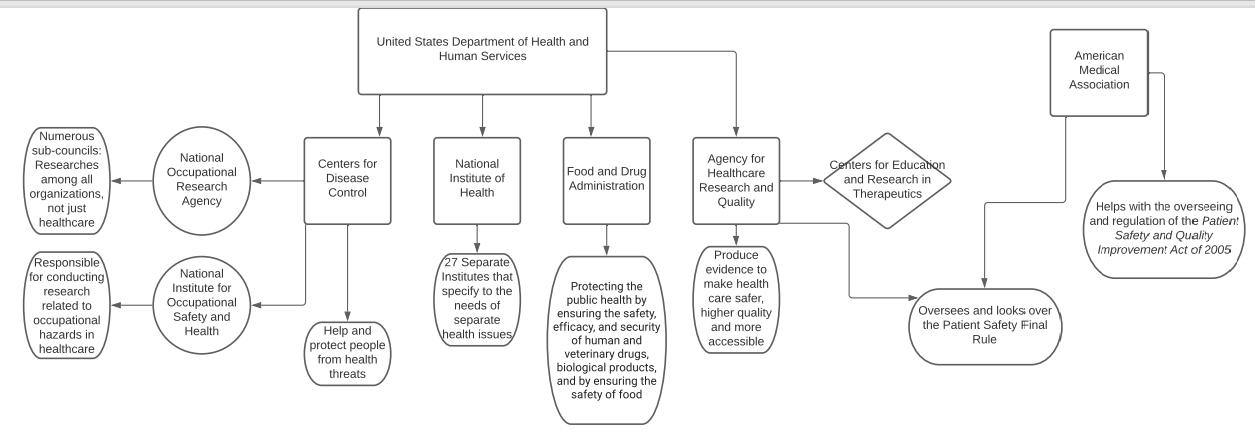
Chart Description: This chart was created to show all the organizations currently handling anything under the medical error and patient safety umbrella as governed by the United States Department of Health and Human Services.

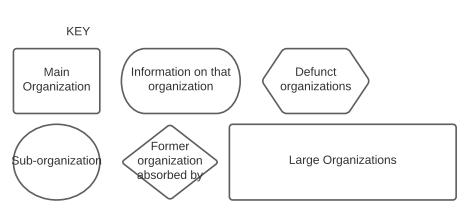

Written By: Connie J. Perkins, PhD, RN, CNE, Jacob Schoeberl, Alexandra Rozanski, Andrew Campbell, Abbigail Cloud
As the healthcare marketplace transitions from volume to value-based, Direct-toEmployer Contracting is a unique catalyst that allows collaboration between employers and healthcare providers. Although it is not a “one-size-fits-all” approach, it has the potential to be more complex. However, the return on investment of Direct-to-Employer Contracting can be much greater while increasing access, affordability, and quality of healthcare for both employers and employees.


After an increase in healthcare spending of about $1.3 million in July 2016, the Gasparilla Inn was interested in exploring new healthcare plan options that would be able to cut company spending and reduce employee healthcare costs. With the landmark’s seasonal operation of 6 months, and with less than 500 employees, the FairCo$t Health Plan Direct-to-Employer Contracting approach set the stage for the business and staff to save money and therefore was the best option.
Direct-to-Employer Contracting allows self-funded businesses to eliminate the “middleman” or insurance carrier by establishing contracts directly with healthcare provider facilities. These providers are then considered to be their preferred points of service for employees’ healthcare needs. Most often, employers prioritize contracts for the highest-cost and most frequent healthcare needs like preventative care treatments and procedures like yearly exams, cancer screenings, and radiology services.
With Direct-to-Employer Contracting, primary care providers are not funded on a feefor-service — meaning clinicians are often rewarded for improved health outcomes of patients instead of the number of services provided. In essence, the better health outcomes of employees equal fewer visits to the doctor, ultimately reducing costs for the employer.
This healthcare approach produces a wellrounded multitude of positives. For The Gasparilla Inn employees, it has increased access to primary care services and has made preventative treatments more affordable. For management, it has provided more control over the design of employee health benefits, and improved health outcomes. Also, doctors are granted more freedom and flexibility with their patients’ treatment plans as they do not have an abundance of insurance company restrictions.
After adopting this type of healthcare plan, the landmark Inn saved about 1.8 million dollars over 3 years, and employees saved approximately $5-$10,000 a year — employees have said that the savings are equivalent to a few extra mortgage payments, a downpayment for a home, or a nice chunk out of their teen’s college tuition.
Even better, the Inn has a Benefits Champion on staff, Liz Schrock, that employees can call any time, day, or night— someone available to
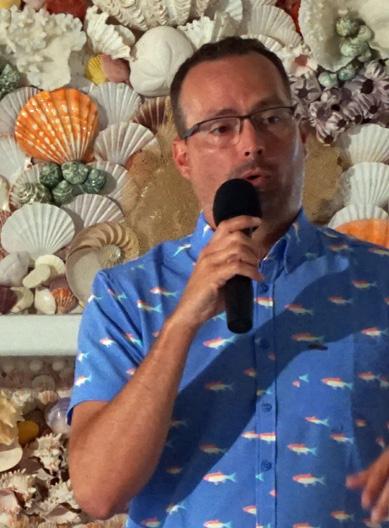




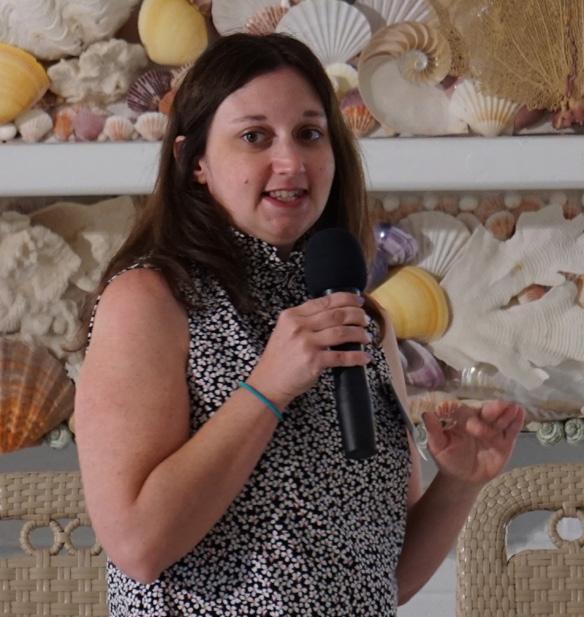


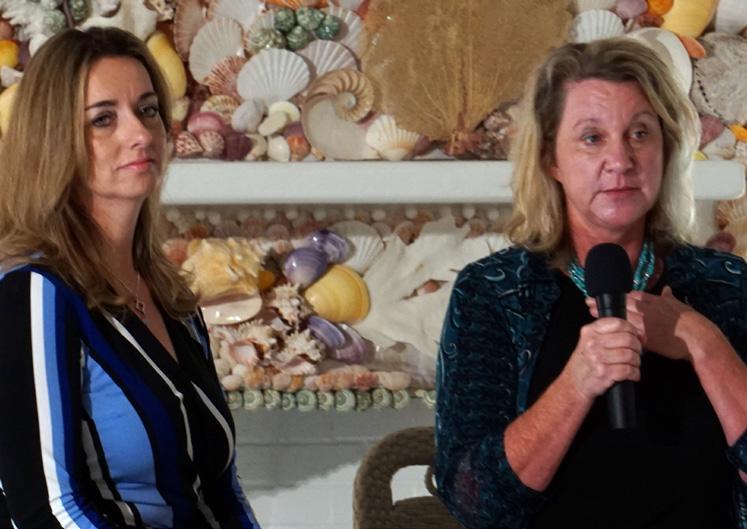







guide staff where to go for services and how to handle their plan, ensuring that everyone is appropriately accommodated and navigational barriers are non-existent.
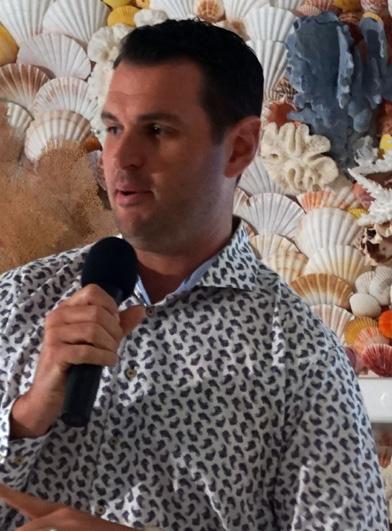

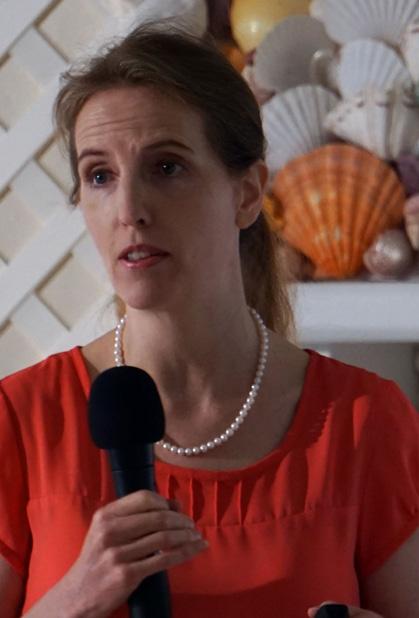

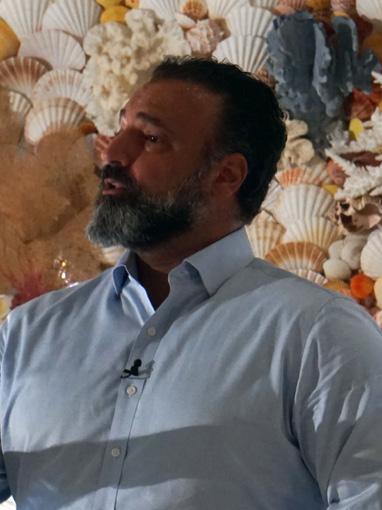


The Gasparilla Inn & Club is a prime example of not only “Florida as it was meant to be” but “healthcare as it was meant to be.” Direct-to-Employer Contracting might be a bit complex, but it may also be the roadmap that ends up saving companies and employees a large lump sum of money, and improving everyone’s health right along with it.
The Gasparilla Inn & Club is a charming resort destination and historical landmark located on the Southwest Gulf Coast’s Gasparilla Island. Serving luminaries like President Bush and Audrey Hepburn. The vintage experience of “Old Florida”, the landmark makes guests feel as though they have stepped back in time. The Gasparilla Inn has admirable characteristics of rich beauty and a variety of dream-like excursions around the island.
The landmark’s desire to serve an authentic Florida experience is without a doubt attractive, but their true authenticity lies in their desire to provide healthcare coverage that is both value-based and financially friendly for the people who put in their energy to make this place what it is.
If you’d like to visit this admirable destination for their 108th year of operation, check out their website at https://the-gasparilla-inn. com as their open season begins in October. With the lengths that this business goes to support its employees, I can only imagine what they must do to serve guests.
Written by Alyssa DeanPhotos Courtesy of Mitigate Partners and were taken at the Gasparilla Inn & Club during a special event

DeSoto Memorial Hospital, located in Acadia, Florida connected with Mitigate Partners by way of Dr. Lee Gross, to establish Direct to Provider contracts and a Direct Primary Care (DPC) plan for their employees, saving the hospital over a million dollars in health care costs.
These savings are especially meaningful to the 160 covered lives out of the 220 elligible employees.
Before working with Mitigate Partners, DeSoto Memorial was spending around $2.2 million a year on health plans for their employees due to increasing premiums.
Lois Hilton, HR Director at DeSoto Memorial, works to find the best health care plan for their employees. Lois and Vince Sica, CEO of DeSoto Memorial,
worked with Carl Schuessler and Barry Murphy, Employee Benefits Advisors at Mitigate Partners, to find a better health care solution for their employees.
Building an employer-built plan in which the hospital pays $65 a month for all primary care coverage for their employees, which covers all visits with their primary care doctor.
The astounding cost savings of 54% ($1.2 Million) allowed DeSoto Memorial to reallocate funds for salaries and other benefits.
These savings also helped Lois and Vince put together a medical advocacy program, which helps their employees get the best price for medical care beyond what their medical care provider covers. For example, costs are reduced for MRIs,
x-rays, and surgeries. This program has helped many of their employees get a lower rate than they would have with regular insurance. With no co-pays or deductibles, one employee shares their stories of spending zero dollars to beat cancer, another tells their story of a thirtyone dollar total payment for an MRI.
DeSoto Memorial’s average annual medical expense per employee decreased from $14,000 to $6,000.
Written by Molly MathewsHannah Barbera JohnsonDiagnosed and treated for cancer, she says, “Every concern I have had, I have taken care of this year, and I have paid absolutely nothing out of pocket. .
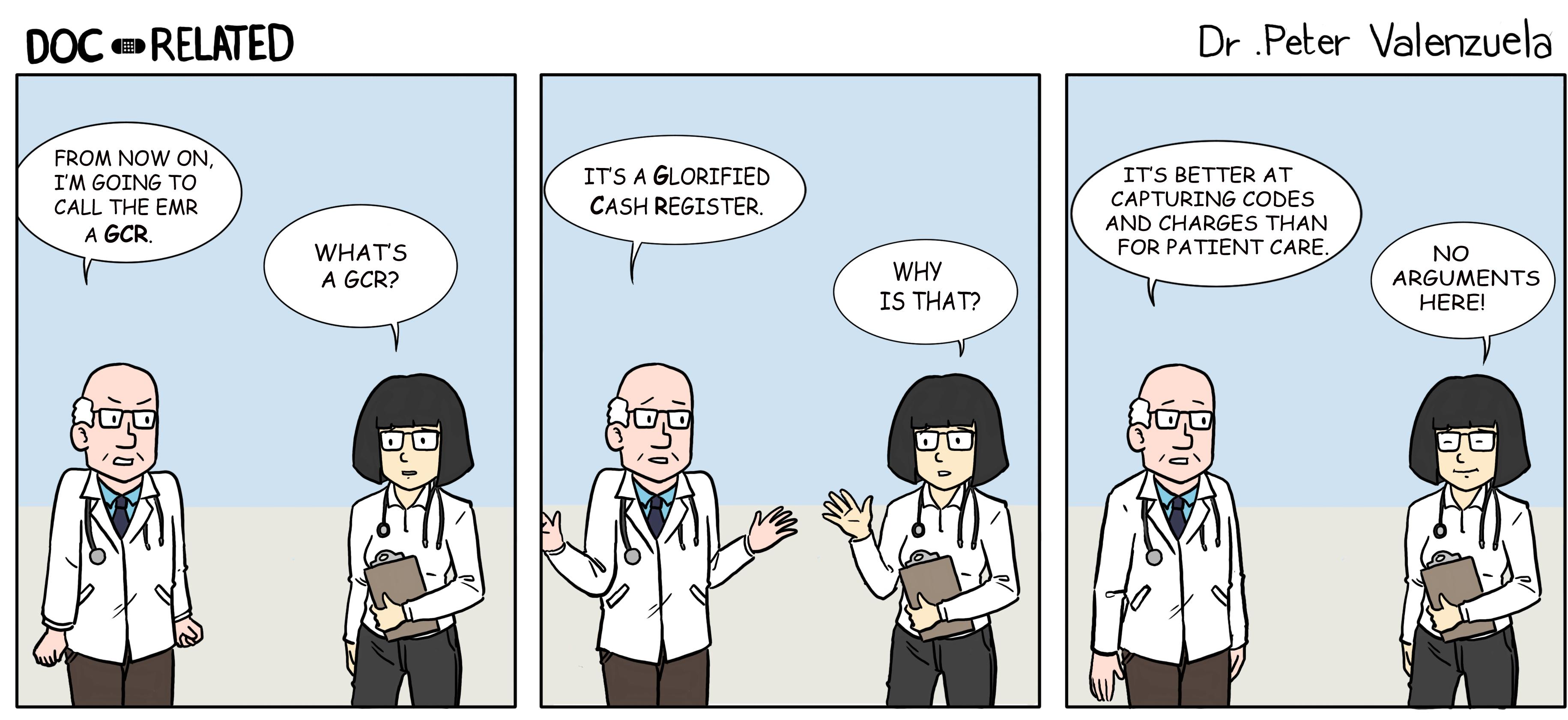



One spring evening eight years ago, in the lobby of a cardiology group’s office in Central Florida, one hundred doctors gathered because they were angry. They were outraged that the local nonprofit hospital systems kept buying up medical practices, and turning independent doctors into hospital employees. All around them, doctors were selling their autonomy for steady paychecks, while inadvertently causing health-care costs to skyrocket, causing quality to plummet, and communities to suffer financial harm as these tax-exempt hospitals pulled millions of dollars off the tax rolls.
The doctors in the room wanted to fight this unhealthy trend, which was happening all over the country. Fortunately, three community business leaders — two CPAs and a health-law attorney — had organized the meeting to help them do just that. I attended that inaugural meeting of the Association of Independent Doctors (AID) as a health reporter. I wrote an article that appeared on the front page of the Orlando Sentinel the next day, not knowing I was writing my future job description. Fifteen months later, the founders asked me if I would run the association. Since then, I have had the honor to serve as the collective voice for a group of doctors fiercely dedicated to preserving the doctor-patient relationship, eliminated the middleplayers, keeping care accessible and affordable, and supporting the mission the founders unveiled that night, a mission that has not changed:
1. Stop the consolidation of hospitals and medical practices
2. Increase price transparency.
3. Eliminate facility fees and move toward site-neutral payments.
4. Enforce anti-trust laws.
5. Stop the abuse of the tax-exempt status by nonprofit hospitals.
While we have made progress in each of these areas, much remains to be done to save this threatened group of doctors. However, in my seven years of fighting for this cause, I have realized that of all AID’s worthy goals, none is more important than the fight for health-care price transparency. If we achieve true, systemwide health-care price transparency, the other goals will take care of themselves, and America’s doctors as well as all Americans would be much better off.
For consumers, the benefits of knowing prices up front are obvious. They would be able to shop for health care the way they shop for clothes, cars or groceries. Price competition would
enter the market causing prices to drop dramatically, making care and coverage more affordable. Lower costs would also lead to better access and more choice.
Less obvious, perhaps, are the equally significant benefits to physicians. Although doctors are often blamed along with hospitals and insurance companies for the high and hidden prices of health care, DOCTORS ARE NOT THE PROBLEM. Most doctors are on the patients’ side. They want price transparency, too. Doctors want to be able to tell patients the price of their care, but they often don’t know either. Most doctors don’t set their prices. Hospitals, insurance companies and the government tell doctors what they’ll get paid. Price transparency would help doctors take care of their patients’ physical health and financial health, while also reversing the unhealthy trend of hospitals and private equity groups buying up their practices. Here’s what the disinfecting power of sunlight would expose.
When hospitals acquire medical groups (and by extension their patient base) they expand their market share. That expanded market share gives them greater bargaining power with third-party payers. They leverage that to negotiate for higher reimbursements, which drive up costs. Hospitals also, thanks to deals they’ve struck with Congress, get to layer in facility fees, bill-padding charges that add zero value and which independent doctors don’t charge. These facility fees can drive up the cost of care three to five, even ten times. Multiply that cost increase by the growing number of doctors becoming employed physicians, and you can see the compounded impact that higher reimbursements and facility fees have on our health-care system. These higher payments give hospitals not only the means, but also the incentive to buy up medical practices, and lure doctors out of private practice.
Marni Jameson Carey is the executive director of AID, and the author of six books, including “What to Do With Everything You Own to Leave the Legacy You Want.”
When health-care prices are finally in the sunshine, consumers will realize that choosing an independent doctor is far less expensive than going to one employed by a hospital, health system, or private-equity group. As patients’ value-driven choices steer them toward independent practices, fewer will choose to get care from more expensive hospital outpatient settings. Price transparency would also expose facility fees bringing them into question and ideally extinction.
Once hospitals are forced to eliminate facility fees and lower their prices, much of their incentive to acquire medical practices will disappear. Some might even begin to divest themselves of the doctors they’ve acquired as their profit margins wane. As buying up medical practices becomes less lucrative for hospitals and private equity groups, market monopolies will unwind. Health-care consolidation, a leading driver behind soaring health-care costs, will slow as hospitals find it more profitable to release their employed physicians from their contracts and let them practice autonomously again.
If you believe in AID’s mission, please join us.
The Association of Independent Doctors (www.aid-us.org), a national, nonprofit (501-c6), nonpartisan trade association based in Winter Park, Florida, with physician members in 44 states. AID works to stop healthcare consolidation, promote price transparency, and lower health-care costs.
Marni Jameson’s book is available at Target, Barnes & Noble, and Amazon.
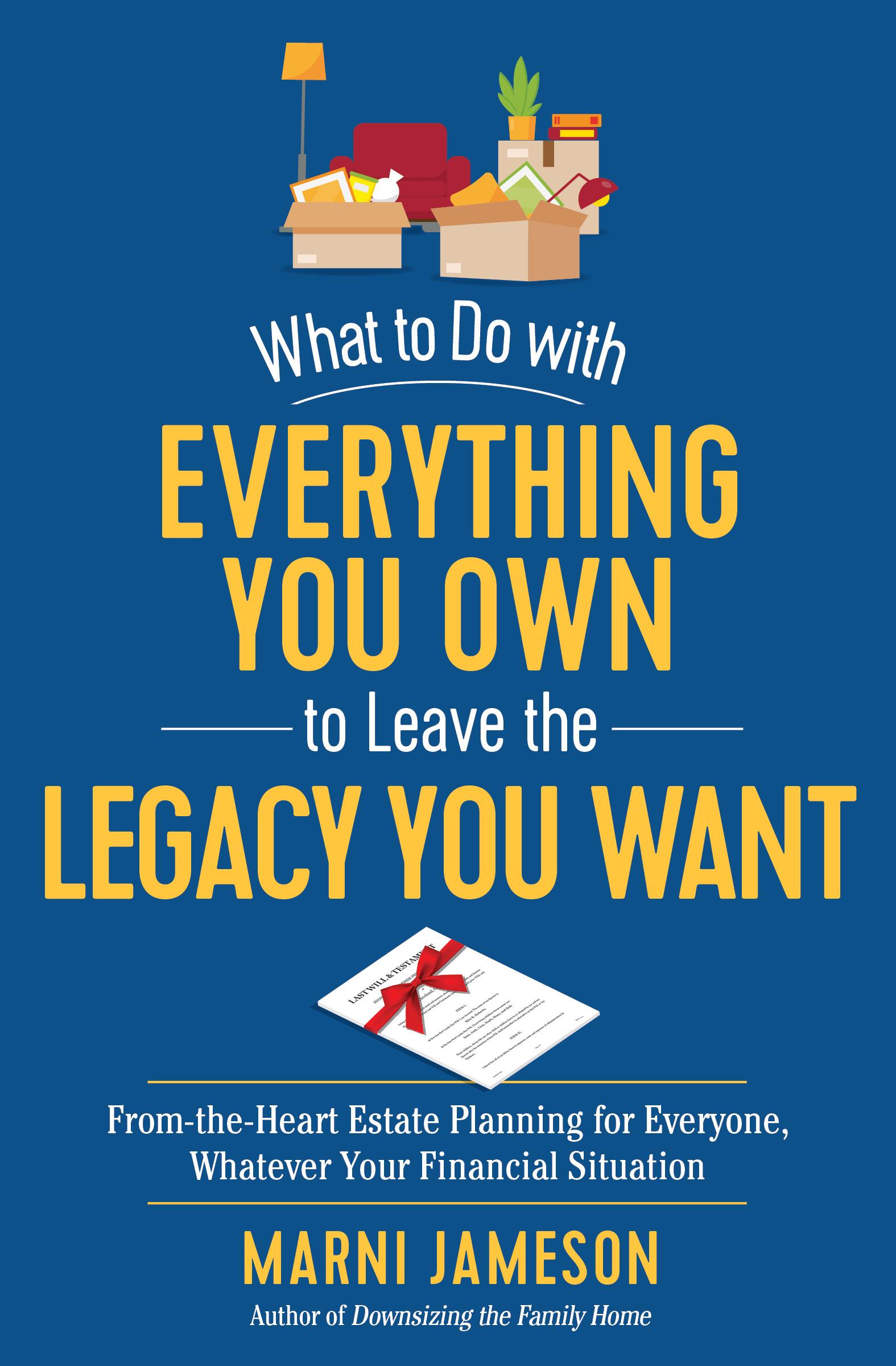


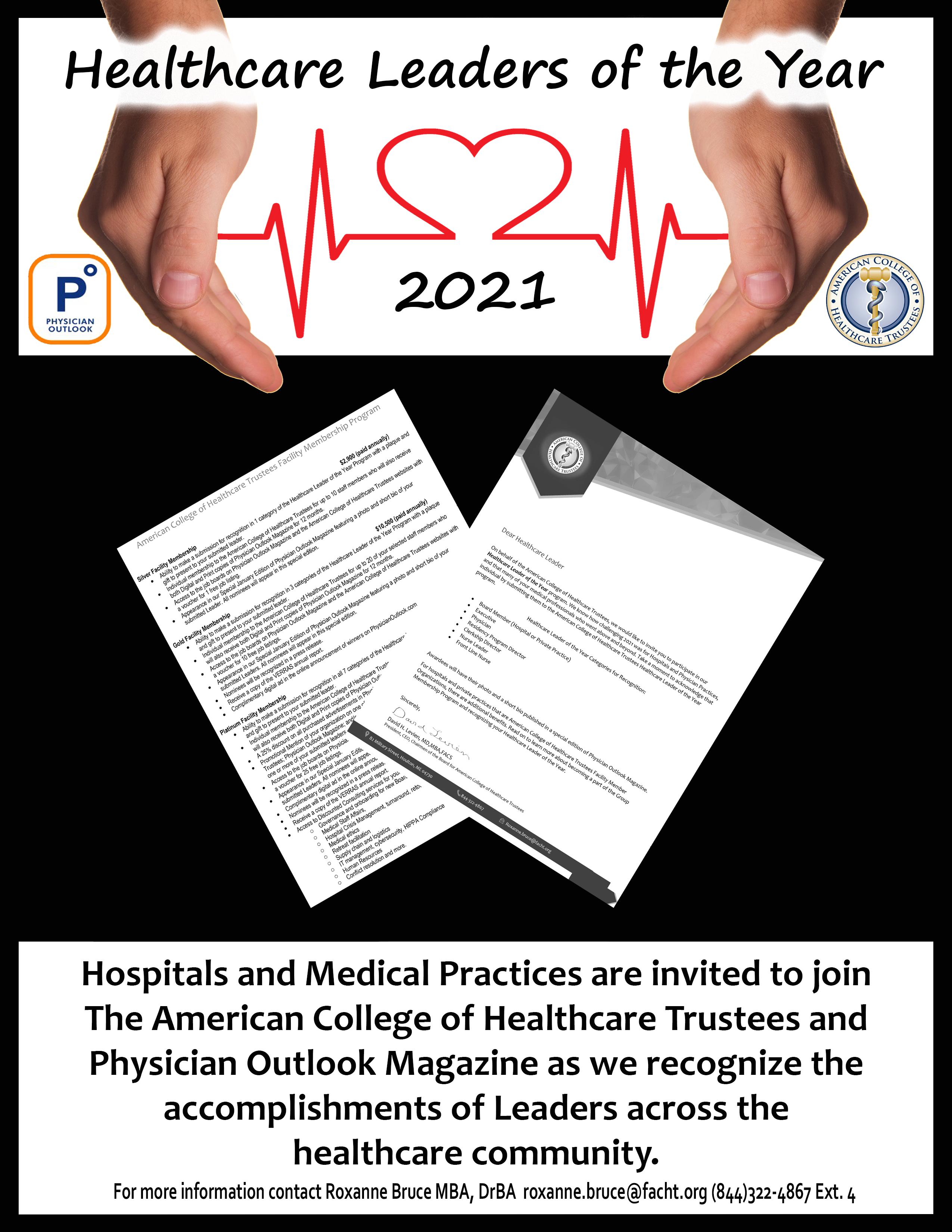






Healthcare is not a perfect system and the Docs 4 Patient Care Foundation, a non-profit led by Dr. Lee Gross MD, is working to find better solutions for the problems facing America. The Docs 4 Patient Care Foundation was founded by physicians who have worked in Direct Primary Care(DPC); these doctors have looked at the most significant issues with healthcare and have developed solutions. The biggest focus is on the price of healthcare. Many Americans struggle with how high the price of healthcare has become, and the Docs 4 patient Care Foundation has made a “Doctors Wish List for Health Care Reform” in which they speak to the changes that should be made to help lower prices. Dr. Gross also introduced Mitigate Partners to DeSoto Memorial Hospital and provides Direct Primary Care (DPC) to the hospital, a connection every hospital should have!
The Docs 4 Patient Care Foundation (D4PCF) is a 501(c)3 nonpartisan, nonproft organization committed to unleashing human ingenuity in health care. D4PCF is the only health care policy think tank whose board is composed of practicing physicians who possess hands-on, practical knowledge of the American health care system. Through hosting conferences, publishing original material, producing a weekly radio show, and serving as a respected resource, D4PCF accomplishes its mission of advancing health care freedom and empowering patients.
Not only does Dr. Gross lead Docs 4 Patient Care, but he also co-founded and is senior Vice President of Epiphany Health, a DPC practice located in North Port and Arcadia, Florida. Like other DPC practices, Epiphany Health focuses on the patient, making sure they are able to get the care they need when they need it for a low monthly subscription. The practice is able to create a relationship between doctor and patient and focus on patient care instead of the red tape of insurance companies. As a passionate health care professional in the North Port area, Dr. Gross is also a founding member of the North Port Community Health Action Team, a team working to improve health and wellness throughout the community.

 Written by Molly Mathews Photo Courtesy of Lee Gross, M.D.
Written by Molly Mathews Photo Courtesy of Lee Gross, M.D.


Growing up I have always had a big heart for compassion and caring, I think it came from being the oldest of 3 kids. I don’t think you could see anyone take care of their baby dolls as well as I did. In high school whenever I was thinking about what I could potentially see as my career, the healthcare field always popped into my head. My father was in healthcare on the insurance side and both of my grandparents were doctors, and one of my grandmothers was a medical tech. I started to look back on what desires I had in my heart as a kid, and I always fell back onto how caring I am. I was also that kid who didn’t pitch a fit about going to the doctor, it actually interested me with all the medical supplies and what the doctors and nurses did. After shadowing a PA during my Senior year, I had decided I liked more of what nurses did. In the hospital, nurses are one the most hands on with the patient, know the patient the best, care for the patient at the bedside, and establish a relationship with the patient. We can have one of the greatest impacts on their care. We are really the ones that give and carry out that direct patientcentered care.
My nursing school journey was tough, but it is supposed to be right? The lectures were long, my notes were long and color coded, I spent hours studying, lots of early mornings and late nights, and the tests were hard. Nursing school teaches you time management, that is one skill that takes repetition to get ingrained into your head on how to do it. Perfect practice makes perfect. Nursing school also teaches you that you must take care of yourself before you can take care of others! It prepares us to take care of people’s lives. There is no second chance when it comes to life! I pushed and persevered until the end. Getting through and finishing nursing school felt like such a reward. After you pass your boards, it is an uncontrollable excitement because it means you are officially an RN, and all that schooling becomes even more worth it!
For me, these new letters after my name aren’t just a symbol of my completion of school and passing my boards. It symbolizes my dream of becoming a nurse, the impact, and the care I want to bring to every life I encounter, and the impact I want to
bring to the Health Care system. Becoming a nurse is just one aspiration in my life as I have many goals and desires, this is just my starting point. Excitement is an understatement of the way I feel about this new journey ahead of me. I’m thrilled to see where this journey leads me, the people I will meet, and the knowledge I will gain.
I get my work ethic and passion in what I do from my dad, Carl Schuessler. He is the ultimate person who inspired me to work hard and go for my dreams (alongside with my mom too). Ever since my siblings and I were little, my dad would be at every sports game, recital, school event, and he coached over 40 of our sports teams. On top of that he worked, and he worked hard. The one thing I always remember my dad saying is, “I’m very passionate about what I do.” I began to ask more questions of what it was he did the older I got. I began to find what he does is very intriguing, and that he is really trying to have an impact on our broken healthcare system. When my dad has a passion, he is all in. His passion for healthcare comes from his frustration with the healthcare system and its prices. He is an Employee Benefits Advisor who provides Risk Management, Cost Containment and Employee Benefits Consulting. He basically helps save companies money by building them financial planning solutions for their employee benefits – he created The FairCo$t Health Plan and has formed Mitigate Partners. Mitigate Partners customizes and builds Employer-Built health care plans for companies to provide better and more affordable healthcare costs/coverage for their employees. Not only does he want to provide more affordable healthcare but also more valuable care to employees. One of his clients, The Gasparilla Inn & Club, my dad has saved them over $3 million the last 4 years by moving them off their fully insured plan onto his FairCo$t self-funded health plan. As my dad has told me, “He builds customized Employer-Built Health Care solutions.” Let’s just say, he is very creative. And passion inspires creativity.
My grandfather, Dr. Carl Schuessler, was a practicing OBGYN in Macon, Georgia for 48 years. He decided to go into Pre-Med because his father was a General Practitioner (GP) doctor and inspired him to be. By the way, like me, he also graduated from The Medical College of Georgia (now Augusta University) in 1968. After medical school, he went into the military for 2 years and served as a doctor. After he finished in the military, he joined a private practice


in Macon, Georgia to specialize in OB because he said, “it was fun and most of the time the people were happy.” His favorite part about being a doctor was taking care of people and creating an impact on their healthcare. His reason for retiring was to have more time with his family and to have more time for his hobbymaintaining his farmland in Forsyth, Georgia.
My other grandfather, Dr. Stephen Rando, was a Radiologist for 34 years. Originally, he wanted to go to Georgetown and major in languages, but it was too expensive. So, he went to a local college in New Orleans, Loyola University and ended up in PreMed attending medical school at LSU. He wanted to help people, which led him to choose Pre-Med, but he told me “To this day I’m not sure how or why I chose medical school, I just woke up one morning and decided I wanted to go medical school.” Following medical school, he worked in Slidell, Louisiana as a general practitioner for a couple of months, then went to Grady Hospital in Atlanta to do his internship, then went into the military for 2 years. After serving, he came back to Emory Hospital in Atlanta to do his radiology residency, then moved to Macon where he finished out his career. He chose radiology because he thought, “It was something that crossed all the specialties and you get a little taste of each one of them.” His favorite part of being a doctor was helping the people he saw daily. He retired because he wanted to have more time with his growing family, and to be able to have time to travel with his wife while still young and able.
My grandmother, Judy Rando, was a Medical Tech for about 3 years until she had kids. The thought of wanting to help sick
people led her to go into healthcare, and she enjoyed learning about different diseases and sicknesses. She wanted to go into healthcare but was unsure about the length of medical school. She attended Loyola University in New Orleans and graduated with a Bachelor of Science in Medical Technology. She said one of her favorite things about being a medical tech was, “How much she got to learn, how rewarding it was, and being able to interact with the patients daily.”
Written by Mary May Schuessler, B.S.N., R.N. Photo Courtesy of Schuessler Family

EXCELLENCEINMEDCICINAZ AMCNALEXETTUZBLOACITCS SEVEROTONCALOGYNVERNTR IDERLACRIXOTTCOCTSECIT TIROXLENOITAZILITUNTVN OCORIFEENICIDEMEKROWEE BANSWERNTOSRCXCRTEAMDM
DLCNAUDITSCAEHTGDNIFAE ITODOCTOCRIOSNCEALLSTG AOLEMELETENOITZILITUAA LUOSTRATEGICIERGESZIMN IRGIFENEBBLNIOPAUYTRIA SIYSFDGKHLCIPOQLTWEENM YSOLUTIONSAZXCVEBENMIL SMRWXTYMFEGQERTCYKGENP PIAEPECUOYVPLEHXSTUYGO ATDTELEMIDIICENECARGVG SETYLAICEPSLSLIWLLBOIN TLIYKDIALYSISSKOSTWLZI EEOSTUILLDURABECOSEOYC YMNCARVEOUTSRAUROYFCII BETTEAPMOTNIERULGIANFR UDORSBQNTITICTYFUGCOKP
MIMZCLAIMSTUOMOCNIADAT PCAUZETELIMESDICINEOXI EITACOEVUTCATGREICNOCF RNOSTRAEGYTAKENOTICEPE TEAOTMSIBILLREVIEWROUN OZCTSSENTIENXSCINIILCE MVALUEBASEDOSTCASTXFRB
Medical Tourism
Strategy
Dialysis
Durable
Claims
Value Based
Bill Review
Benefit Pricing
Aggressive
Solutions
Concierge
Management
Telemedicine
RX
Cost
Audits
Carveouts
Oncology
Clinics
Excellence
When Kevin Vincent had to get two MRIs, he knew it would cost him. But he found an unexpected workaround that saved him big money – while exposing a lot of what’s wrong with American health care.
Like tens of millions of working Americans, the 51-year-old from Amarillo, Texas had a high deductible health plan. His insurance policy required him to pay the first $10,000 before the health benefits kicked in.
Vincent’s nurse practitioner referred him to a nearby hospital-affiliated imaging center for the two MRIs. How much is this going to cost? he asked when he called the imaging center.
The customer service representative told him they would charge his insurance plan $11,000 for the two tests. Vincent asked if he could get a discount by paying cash. They told him the cash price would be $9,000.
The sticker shock caused Vincent to gasp. The helpful rep told him not to worry and offered to put him on a payment plan. Thanks, but no thanks. Medical debt is not the solution for the problem of high prices! Fortunately, Vincent, who sells property and casualty insurance, had a friend who sold health benefits. He ran the prices by his buddy and learned about a better way to get the tests he needed – at a much lower price.
Vincent’s friend referred him to Green Imaging, which contracts with independent imaging centers around the
country to offer cash prices for CT scans, mammograms, MRIs, X-rays and other imaging tests. The company is capitalizing on what industry insiders and researchers have known for a long time: hospitalbased imaging centers have much higher prices than independent imaging centers. One study found that the price of an MRI can vary from $300 to $3,000 in the same area, with no notable difference in quality. Hospitals simply impose a markup on the same MRI or CT scans you could get elsewhere.
Vincent didn’t realize hospitals were marking up MRIs, but he gave Green Imaging a call. What he learned astonished him. The new price: $950. For both MRIs.
Vincent would not be able to apply the cash-payment to his deductible, but the process was easy. He sent his order for the MRIs to Green Imaging and got the MRIs at an imaging center about half a mile from the site that had quoted him the inflated price. Just like that he saved more than $8,000! That’s HUGE! Vincent even got the MRIs read by a radiologist and received copies of his images. He shakes his head in astonishment that he saved the equivalent of multiple mortgage payments by shopping around.
Vincent relished his own victory. But it upset him to think of people who didn’t know they could get a better deal. About 1 in 5 Americans has medical debt in collections. People like him were likely to go into debt because a hospital required them to pay more than they should. “The fact that so many people are financing this debt, and they could save so much money - I didn’t like it, frankly,” Vincent said.
Now here’s where we all need to be on guard. This unjustified price variation isn’t just related to MRIs. Health care prices vary greatly for all types of drugs and
tests and treatment. This isn’t a rare thing. It’s everywhere! The business model of the American health care system is based on making working Americans pay more than they should for the care they need.
Fortunately, we have more tools than ever to see if we’re getting fair prices, including the federal government rule that now requires hospitals to post their prices – including the previously secret rates they have negotiated with each insurance plan. See if you can save yourself big money next time you undergo some type of medical treatment. Thankfully, someone helped empower Vincent.
So are you ready to take patient empowerment to the next level?
At the Mitigate Partners event in Florida, I talked about my campaign to equip and empower patients to save big money on health care. My new book, Never Pay the First Bill: And Other Ways to Fight the Health Care System and Win, is a how-to guide to help working Americans and employers save big money by hacking the health care system. The book has been a huge success. I’ve been featured on the national NPR shows 1A and Weekend Edition, Good Morning America, ABC News Live and dozens of podcasts. The book is being called a must-read for every American.
Now I’m turning it into an engaging series of health care financial literacy videos called The Never Pay Pathway (aka NPP). The short, 3-5 minute videos translate the same how-to tactics in the book into a format that’s more accessible to a larger audience. In about an hour, viewers can learn how to navigate around the pricey financial pitfalls of our health care system. The topics covered include: How to identify and contest errors and overcharges in your medical bills; how to win insurance company appeals; how to
avoid care you don’t need; how to use hospital financial assistance policies; how to defend yourself in small claims court and much more. I am raising money through a crowdfunding campaign on Indiegogo to pay for the editing, graphics, animation and other production costs for the videos, as well as a smartphone app and other tools. We have great perks for people and organizations who partner with us.
My book and videos show employers and working Americans how they can work together to push back against our overpriced health care system. And it’s already showing a tremendous return on investment for the readers who are applying its principles and tactics.
Individual patients have so many ways to save money in health care. And when they save, they can actually lower the costs
that they and their employers pay for their health plans.
Employers also have so many ways to save money on health care. They are entering into direct primary care relationships with doctors, doing bundled payments with hospitals, reducing what they spend on pharmacy, and much more. The Mitigate Partners team has examples of employers saving massive amounts on health care benefits, while improving the benefits they provide to their employees! I show in my book how it’s already happening, and now we just need to spread the word. Let’s push back against the unjustifiably high cost of health care in the United States. When we do we can save a lot of money, while still getting the care we need.
Written By Marshall Allen Book Photo provided by Marshall AllenAlexciaandherhusbandfought aninsurancecompany’sdenialof theirclaimthatleftthemonthe hookfor$78,000inbills.They successfullycontestedthedenial andweresavedfrombankruptcy whenthebillwasreducedtozero.


Andystartedcontestinghisbills andwithinweekssaved$815. Joshsuedhisdentistinsmall claimscourtfor$300because ofanunfairbillandwonaquick settlement. OneAmazonreviewertookmy adviceandwenttoanindependent imagingcenterforaCTscan insteadofahospital-savingmore than$1,400.
Get admitted to before you finish high school
ST. BONAVENTURE HAS SEVERAL AVENUES FOR STUDENTS TO PURSUE A MEDICAL CAREER.

Participating in Olean General Hospital’s Experience in Clinical Medicine provides a behind-the-scenes look at a community hospital.
Resting in Peace is not in the vocabulary for Jerry Ashton, an energetic, forward-thinking octogenarian who has a simple goal: to change the world.
He is the primary brainchild behind a new and exciting platform called Let’s Rethink This, where individuals and groups gather in “families” and “Impact Organizations” to tackle tough global problems—including healthcare--with simple, common-sense solutions.
True sense-makers often lack the budgets and financial backing to really get noticed, but Jerry and his experienced team founded LRT to make sure that Impact Organizations get the funding, partnerships, and recognition that they deserve.
Recognizing that standing up to the “status quo” and challenging accepted norms is going to be met with resistance, Jerry doesn’t allow little things like a global pandemic or divisive politics get in the way of LRT’s goals.
Although he spent a large portion of his career in the debt collection industry, Jerry had a moment of epiphany at the age of 72 while attending an Occupy Wall Street event and has since devoted his life to helping the world think differently about debt, money, and the creation of value.

Initially focusing on combining compassion with business acumen to create a new way to forgive medical debt, he cofounded the charity RipMedicalDebt.org, (RIP) which purchases personal medical debt on the debt collection market for a few cents on the dollar, and then forgives it in a way that there are no tax consequences. To date, this charity has relieved approximately $4 billion in medical debt (yes, that is Billion with a “B”) and benefited over 2 million families across the US and the donations continue to pour in at an astonishing rate. Jerry retired from RIP in the fall of 2020 and is now rolling up his sleeves to tackle some of the toughest social and economic problems of modern life in the US.
Written by Marlene J. Wüst-Smith, M.D.
The Golden Rule of insurance admonishes that we should never use insurance to pay for things for which we can afford to pay ourselves. The purpose of insurance is merely to protect us from low probability, high-cost events. The worst violation of this rule has been with health insurance. The “greatest heist in American history”, as dubbed by Dave Chase, has been the fact that large insurers have duped employers for 70 years into paying them to pay their low-cost predictable claims. Smart, forward-thinking employers are beginning to realize that they can’t actively manage their health benefits costs unless they follow the golden rule: pay for primary care directly; self-insure all the predictable, low-cost care; and use insurance only for its intended purpose, the high-cost care.
Enter Direct Primary Care (DPC). In 2014 Dr. Eric Crall eliminated the insurance middleman between himself and his patients by adopting the direct primary care model: unlimited primary care for his patients for a low monthly membership fee, and no administrative burdens from dealing with insurance. In 2016 he founded a community of DPC physicians throughout Florida to bring the same valuable primary care benefit to employers. Persona Healthcare Direct has nearly 30 providers in Florida, allowing larger employers to leverage the model. Employees get unlimited primary care, much of it virtually through phone or video, at no out-of-pocket cost to them, so they don’t delay seeking care for acute problems or put off care of chronic problems such as diabetes, hypertension, asthma, depression/anxiety, insomnia, obesity, or any other problems that constitute the 85-90% of problems that can be managed by a primary care physician.
The employer truly gets happier, healthier employees and the overall costs of the plan go down by removing the barriers to primary care. When employees are less likely to use urgent care, specialists or high-cost imaging, the cost of the plan is typically 20-40% less for the employees who have a DPC physician. In addition, the DPC benefit can typically be added in a cost-neutral way. Employers take the primary care costs out of the plan, pay for primary care directly, and actively prevent utilization of the most expensive care by encouraging the employees to see the DPC doctor whom they are already paying at a low monthly rate. Following the Golden Rule allows employers to have a simpler, cost-effective healthcare solution for their company. It empowers them to provide “coverage with care”, a health benefit their employees love because it actually benefits them. There are many DPC communities throughout the country that network with each other, so coverage with care is available to employers throughout the country today.

Eric Crall, M.D. is a Direct Primary Care physician and founder of Tampa Bay Direct Care Network.
Written by Dr. Eric Crall Photo Courtesy of Dr. Eric Crall Image by Mona Tootoonchinia
In the heat of a pandemic, healthcare reform is at the forefront of everyone’s minds. Insurance providers are dictating to Doctors how to treat their patients. Patients are being pushed into doing things that they would prefer not to do. Schools, businesses, families, and individuals are faced with the questions:
Carl C. Schuessler Jr., DHP, DIA, GBDS knows what’s next. In fact, he built the FairCo$t Health Plan often refered to as The Employer-Built Healthcare Benefit Plan. This plan doesn’t focus on how
much money Mitigate Partners can make, but how much money it can save its clients. In essence, this concierge service is giving a level of hands-on management that we haven’t seen before in the insurance industry. In every way putting the patient, doctor relationship first.
Carl was selected in the first group of 30 forward-leaning Benefits Advisors in the U.S. to participate as a Charter Member of the Certification Program for Benefits Advisors. The program, known as Health Rosetta, is a blueprint of best practices for intelligently purchasing health benefits that have been sourced from the most forward-leaning benefits purchasers of all types around the country. The Health Rosetta Accredited Advisor Program is an exclusive ecosystem of healthcare advisors who have illustrated exceptional transparency, innovation, and execution in the areas of risk management, employee
benefits, and high-performance plan design.
Featured in Forbes , Carl, and Barry Murphy shed light on the hard work of Mitigate Partners and their brethren. Focusing on actively managing health plans and how acting as a Population health Manager instead of traditional brokers saves money in all the right places. In a special edition of Bold TV, Philip Michael and Carl had the opportunity to talk about what makes Mitigate Partners so different from the traditional BUCAH providers.
There are many people that benefit from increasing prices in the health insurance industry and the losers are the employers and their employees.
In traditional health insurance, the focus has been on making a profit for investors and raising the valuation of the company on Wall Street. In an Employer-Built plan,
the focus is on targeting and mitigating costs. It’s about having Benefit Advisors on hand to promote patients advocating for themselves. Mitigate Partners isn’t focusing on their own bottom line, but the bottom line of every client. It is their mission to help employers save money on healthcare and take the best care possible of their employees.
Mitigate Partners is clear about costs and is upfront about pricing. Even more transparent than industry requirements, Carl believes that it is crucial to successful care that clients know the cost of medical services upfront so that they can make informed decisions. DeSoto Memorial Hospital was able to cut healthcare costs by 54% ($1.2 Million), and the Gasparilla Inn & Club saved 34% over 3 years ($1.8 Million). Both companies were able to continue providing their staff with top-notch care.
The best part of Mitigate Partners’ Employer-Built Plans is that often employees have little to no out-of-pocket cost for care!
Healthcare’s cost and access now sit atop the list of worries for American households
In years past, the political debate over the best economic approach for American healthcare centered on the autonomy of the patient and physician when making the big decisions Who would make them? Who controlled the complex process out of which those decisions emerged? Was it the patient, in consultation with the physician? Or was it the insurer? Or would it be an agency of the state government? Or even an agency of the federal government?
The focus of that debate has now been blurred.
Carl says that employers must have courage and think outside of the box. The BUCAHs (big five health insurance providers, Blue Cross/Blue Shield, UnitedHealthcare, Cigna, Aetna, and Humana) aren’t the right choice for everyone. In many cases, employers can save money while simultaneously providing better benefits and better levels of care by looking at all their options, and Mitigate Partners is a great option.
 Written by Roxanne Bruce, MBA, DrBA, FACHT
Picture courtesy of Carl Schuessler Jr., DHP, DIA, GBDS
Written by Roxanne Bruce, MBA, DrBA, FACHT
Picture courtesy of Carl Schuessler Jr., DHP, DIA, GBDS


As insurance premiums and deductibles have risen, and as the costs for prescription medications have soared, cost has now appropriately supplanted autonomy as the primary worry of the patient. After all, if the sick cannot pay their hospital bills, or must ration (or even forgo) essential medications because they are unaffordable, why worry about autonomy and the complexities of process?
Simple access to medication, to doctors, to tests, to medical devices, and to hospital beds when they are needed will always take precedence over medical decision-making
With the blurring of the focus in the debate, we are seeing the kind of worry characteristic of an underdeveloped country’s healthcare system rise to the top of the list here in the United States.
As costs soar and dollars are relentlessly wasted in countless, hidden ways, access to care is progressively narrowed to the point that, for some, it is choked off. This is the root cause for why we discuss the issue of preexisting conditions
At the heart of the matter, we have the patient and the physician Yet they have little control over the costs and the waste In some cases, we have even reached the absurdity of physicians sometimes being precluded by the rules of the game from tending to the sick, the very people they swore to protect
Free to Care is for both patient and doctor Doctors want to practice medicine and patients want to care for themselves and their families We seek to unshackle those from the restraint of regulation that have been hindered from these freedoms
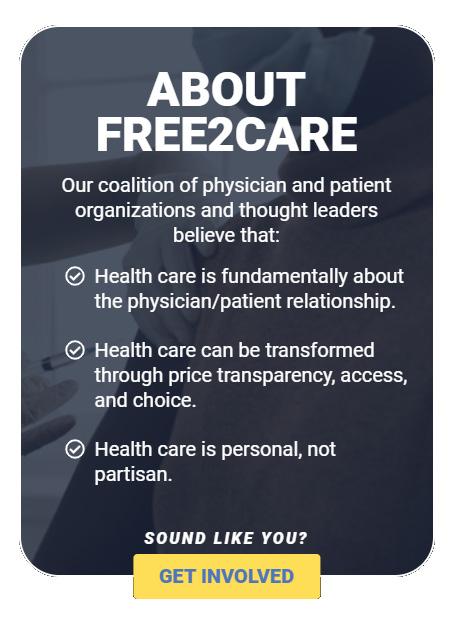

Direct Primary Care, the value-based and transparent revolution in primary care, continues to sweep over the nation. Physicians continue to reject the current burdensome health care system of EMRs, coding, prior authorizations, paper work, and insurance rejections that leave patients without care. The only thing we really need for excellent primary care is a physician and a patient—no middlemen required.
Now, employers are seeing the enormous benefits of direct primary care (DPC) to lower cost, increase access to care, and co-ordinate care for employees. How do we connect DPC physicians with employers and like minded, transparent health benefits advisors?
Well, that takes some magic, pixie dust, and miracles.
Back in 2019, after we added over 800 employees to our DPC clinic from one employer in Anderson, SC, I decided to write our story to help other DPC physicians through the maze and haze of working with employers and benefits advisors.
The book evolved from a talk given in the summer of 2019 at the AAFP DPC Summit: “Magic, Pixie Dust, and Miracles: Direct Primary Care for County Employees”.
We had just added a large employee panel to our group and wanted to share with the DPC community how that was going and how we managed that process. After the talk, we continue to receive more and more request to share our experience as there were very few DPC clinics that had done a true DPC focused self funded health plan like our employer.
This led me to write a detailed account and became the book Magic Pixie Dust and Miracles: A Guide for Direct Primary Care and Employers.
The books is a detailed account of our journey with employers and also lays out steps to find and vet employers and benefits advisor that hold to the same vision of health care. It is written primarily with a DPC physician focus by a DPC physician.
However, there are specific sections for employers and benefits advisors to gain understanding of the DPC philosophy and what it means working with these valuebased physicians. It ultimately seeks to connect DPC physicians, employers and benefits advisors to leverage relationships and information to lower costs and improve access to care for employees.
It’s an “everyone wins” situation.
Detailed topics include:
• What are the advantages and disadvantages of working with employers?
• How do DPC physicians connect with employers in their area?
• How DO DPC physicians find DOC knowledgeable benefits advisors in their area?
• What are the DPC advantages for employers and benefits advisors?
• How can benefits advisors and employers find and vet DPC physicians?
• What are some red flags that everyone should watch for regarding DPC clinics, employers and advisors?
How do you get large numbers of new employees enrolled into your DPC clinic in a timely manner?
To date, the response from the DPC community and benefits advisors has been overwhelmingly positive to the book. We continue to share the stories of our DPC and employer success at events and conferences all over America. Our hope is that as DPC grows more and more employers will see the magic of DPC and keep it going.
Written by Shane Purcell, M.D.

The first 100 new annual subscriptions now through October 31, 2021 will receive a free copy of either “Let’s Talk Sh!t” or “Patients at Risk”. Don’t delay! Head on over to physicianoutlook.com and get your subscription today.

Publisher: Marlene Wüst-Smith, M.D. Editor in Chief: Alicia Roselli
Managing Editor: Roxanne Bruce, MBA, DrBA,
VP of Advertising: Pamela Ferman Director of Art and Production: Tobias Sarrio Marketing/Copyright Editor/ Journalism/Social Media Interns: Samantha Petzold, Riley Snowden, and Madison Smith, Pennsylvania State University and Molly Matthews, Hobart and William Smith Colleges
Contributing Authors: Molly Mathews, Breanna Courville, BA, Connie J. Perkins, PhD, RN, CNE, Jacob Schoeberl, Alexandra Rozanski, Andrew Campbell, Abbigail Cloud, Alyssa Dean, Marni Jameson Carey, Mary May Schuessler, B.S.N., R.N., Marlene J. Wüst-Smith, M.D., Riley Snowden, Samantha Petzold, Roxanne Bruce, MBA, DrBA, FACHT, Shane Purcell, M.D. Cover Art: Julia McKillen, M.D.
Published by “PhysicianOutlook Publishing” Editorial policy: PhysicianOutlook magazine is a national magazine dedicated to empowering physicians and their patients to improve the world of medicine together. Editorial decisions are based on the editor’s judgement of the quality of the writing, the timeliness of the content, and the potential interest to the readers of the PhysicianOutlook magazine. The magazine may publish articles dealing with controversial issues. The views expressed herein are of the authors and/or those interviewed, and may not reflect the official policy of the magazine. PhysicianOutlook neither agrees, nor disagrees with those ideas expressed, and no endorsement of those views should be inferred, unless specifically identified as officially endorsed by the magazine.
“Letters to the Editor” email: rbruce@physicianoutlook.com
Information on advertising, subscriptions, and job board email: hello@physicianoutlook.com
“PhysicianOutlook” is a registered trademark.


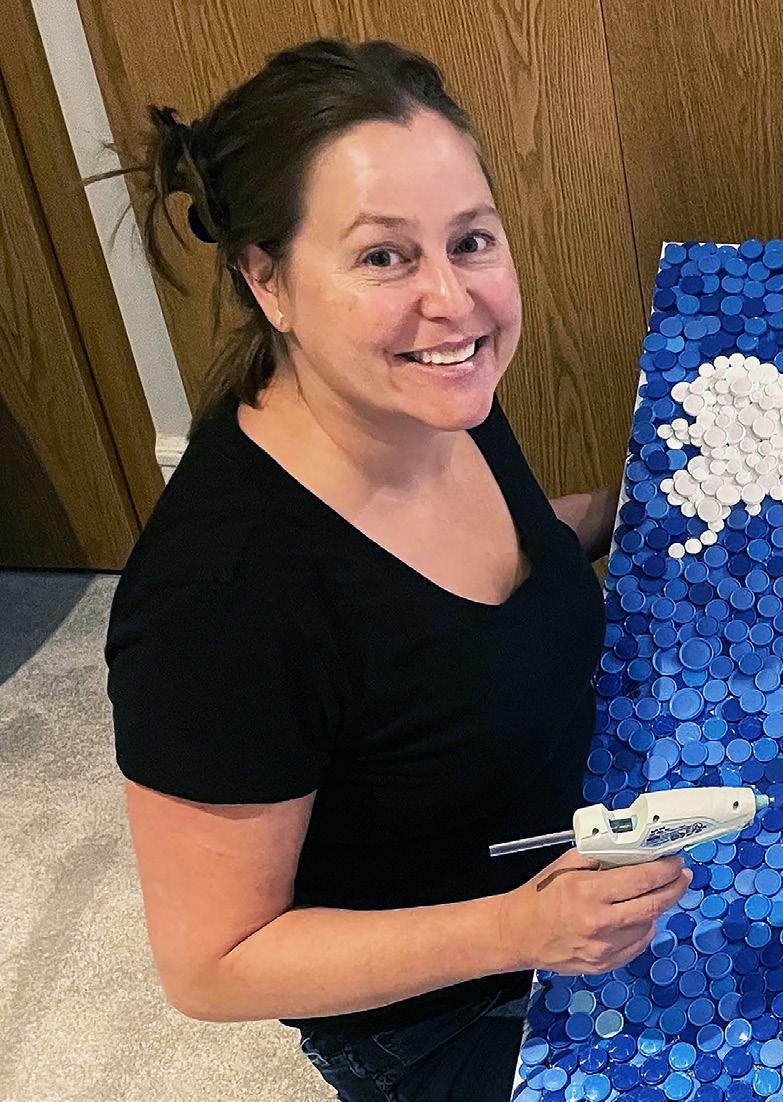
“I picked up the propofol vial and looked at the cap: The blue top, just the color of my childrens’ eyes. But even that pleasant thought did not mitigate the pain that it took for the simple movement to remove the cap. I had just had carpal tunnel surgery and I assumed my biggest challenge would be masking. It was such a shock to realize that the most challenging part of my day was popping off vial caps. I had always taken the caps for granted and all of a sudden the caps represented a challenge. It never occurred to me that I would have difficulty with them, but once it did I thought I was going to beat it. I looked around the room, and, for once, took notice of all the vial caps. They seemed to form a mosaic of color. They were winning, but I wouldn’t let them. I started collecting the caps, and at the end of the day, I would look down at my collection and instead of focusing on the pain it represented, I focused on the beauty I could create.”
Dr. Julia McKillen